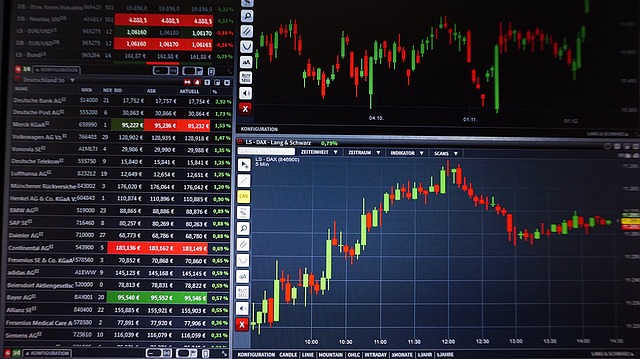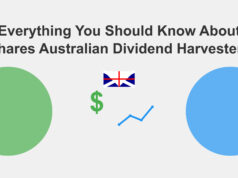If you’re looking for a versatile, low-risk, and efficient way of diversifying your portfolio or gaining access to global markets, exchange-traded funds (ETFs) are your go-to investment option.
This article discusses ETFs, their features, advantages, disadvantages, and how you can invest in them.
What is an Exchange-Traded Fund (ETF)?
An exchange-traded fund is an investment fund traded on a stock exchange, just like individual stocks. They offer investors a way to pool their funds in a single security that comprises a broad portfolio of assets, including stocks, bonds, commodities, and other assets.
Many investors prefer ETFs because of their flexibility and portfolio diversification ability, key attributes seen in stocks and mutual funds, respectively. ETFs are also highly liquid and cost-effective, making them great options for investors who need accessible and affordable assets in their portfolios.
How Does an Exchange Traded Fund Work?
As the name implies, exchange-traded funds are funds traded on stock exchanges. They mirror the performances of their underlying assets or indices.
Once you buy an ETF, you can access the various assets it holds, including stocks, bonds, and commodities. Since ETFs can be bought and sold on stock exchanges like regular stocks, they also experience market fluctuations and price changes during trading hours.
However, they’re generally less risky than their underlying assets. This is due to their diversity, as the good performance of others easily offsets the poor performance of one asset in an ETF. You can easily use ETF to diversify your investment portfolio.
Also Read: Make Your Money Work for You: 10 Ways to Earn Extra.
Types of Exchange-Traded Funds
There are many types of ETFs available in the stock market. Understanding how they differ and what they offer is important for choosing the right ETF to invest in. Here are some types of ETFs based on the types of investments they hold:
Stock ETFs
Stock or equity ETFs track a specific stock index, like the S&P/ASX 200, by holding the stocks in that index. They’re usually more risky than other types of ETFs, as they mirror the performance of the underlying stocks they track.
When the value of the underlying assets in a stock ETF fluctuates, it also leads to a decline in the value of the ETF.
Commodity ETFs
As their name implies, commodity ETFs track the performance of commodities like gold, silver, crude oil, or agricultural products.
Due to the resilience of some commodities during economic downturns, commodity ETFs tend to do well even when there’s a market fluctuation.
Bond ETFs
Bond ETFs invest in various bonds, such as government, corporate, and municipal bonds. They’re typically less risky than stock ETFs as they mirror the performance of the underlying bonds they track, which are low-risk, fixed-income assets.
Unlike individual bonds, bond ETFs have no maturity date, making them suitable for investors who need regular incomes.
Sector ETFs
Sector ETFs focus on assets in a specific sector of the economy, such as healthcare, financial services, technology, or energy. With the Australian stock market divided into 11 sectors, investors have many companies to choose from in each industry.
Often, sector ETFs are riskier than general market ETFs, as they’re restricted to only the assets in a specific industry. However, they’re also less risky than investing in individual companies in those sectors.
Also Read: How to Open a High-Interest Savings Account in Australia
International ETFs
International ETFs expose investors to foreign markets by tracking global stock indices or holding assets from specific countries.
Australian investors can tap into the US stock market by investing in US ETFs or the world stock market by investing in global ETFs. Popular international ETFs are the Vanguard Global ex-US Real EST ETF or the Invesco Global Listed Private Equity ETF.
Inverse ETFs
Inverse ETFs are structured to profit from market downturns, as their values increase when the value of the underlying assets or index declines. Many inverse ETFs are not true ETFs but rather exchange-traded notes (ETNs), which have a different structure and risk profile from ETFs but also trade daily on stock exchanges.
Currency ETFs
Currency ETFs track the value of a currency or basket of currencies. They’re reliable securities for investors looking to hedge against inflation.
Leveraged ETFs
Unlike inverse ETFs, leveraged ETFs multiply the returns of the underlying assets they contain. For example, if the S&P/ASX 200 rises by 2%, a 2x leveraged S&P/ASX 200 ETF will return 4%, and if the index falls, the ETF falls similarly.
Features of Exchange Traded Funds
Intraday Trading
Like regular stocks, ETFs can be traded on the stock exchange during trading hours. This allows investors to enter and exit positions at market prices.
Low Costs
Most ETFs are passively managed, incurring lower management fees than actively managed investment funds like mutual funds.
Tax Efficiency
ETFs are highly tax-efficient investments because of their in-kind creation and redemption processes, which can minimize capital gain distributions.
Dividends
Some ETFs made up of dividend-paying stocks distribute dividends to shareholders. However, some may choose to reinvest the dividends for greater future returns.
Transparency
ETF portfolios and prices are open to all shareholders. This transparency enhances investors’ confidence and enables them to know the composition of their portfolios.
Easy Access
ETFs are generally more liquid than mutual funds. Buying and selling an ETF is as straightforward as buying and selling individual stock on the stock exchange.
Also Read: Certificate of Deposit: Definition, Advantages & How to Invest in CD
Advantages and Disadvantages of Exchange Traded Funds
Like other investment funds, ETFs have advantages and disadvantages, and understanding them will help you choose the right one for your portfolio. Here are some of them:
ETF Pros
- They provide diversification by holding a basket of multiple assets
- ETFs are highly liquid
- Have lower expense ratios compared to actively managed funds
- Their flexibility makes them suitable for different kinds of long- and short-term investments.
- Their lower portfolio turnover and in-kind redemptions increase the tax efficiency of ETFs
- ETFs are available in various asset classes, including bonds, stocks, commodities, etc.
ETF Cons
- The market price of an ETF can deviate from its Net Asset Value, leading to premium or discount issues
- A tracking error can lead to a deviation in the performances of an ETF from the underlying asset
- Some ETFs are complex for inexperienced investors, as they employ leverage, derivatives, and other investment strategies.
- There can be an increase in transaction costs due to overtrading.
How to Start Investing in ETFs
Here’s a straightforward process for investing in ETFs:
Define Your Investment Goals
The first and most important thing you must do before investing in ETFs is to determine what you want from the investment. Do you want a high-risk investment that yields mouthwatering returns or a low-risk one that guarantees protection for your principal?
Understanding your investment objectives will help you choose the right ETFs for your portfolio.
Select a Brokerage Account
You’ll need a brokerage account to invest in ETFs, and many online brokers offer them. Do your due diligence and choose an online brokerage that’s reputable and transparent.
To get the best brokerage, examine factors like trading fees, account minimum investments, and the variety of ETFs they offer.
Choose Your ETFs
Once you’ve chosen a brokerage account, research the ETFs they offer and choose the ones that align with your investment goals.
In choosing ETFs, consider important factors like their historical performance, expense ratio, the underlying assets they hold, and the fund’s investment strategy.
Also, choose widely diversified ETFs covering different asset classes from different sectors and countries.
Monitor and Rebalance
Investing in ETFs is one thing; constantly monitoring them to ensure they’re performing as expected is another.
You must regularly monitor and rebalance your portfolio to ensure it aligns with your goals and yields the desired returns.
How Much Do You Need to Invest in Exchange-Traded Funds in Australia?
According to the Commonwealth Bank of Australia, you can invest as little as $50 in exchange-traded funds. However, you must understand that your investment determines your returns, as a larger investment will make earning decent returns easier.
Do ETFs Pay Dividends?
Yes, ETFs that contain dividend-paying stocks pay dividends to their shareholders.
Can You Sell an ETF at Any Time?
Yes, ETFs are traded during regular hours, enabling you to enter and exit positions at will.
Also Read: 10 Best Investment Ideas That Are Proven to Work
Conclusion
Exchange-traded funds are great investment options for investors looking for cost-effective, tax-efficient, and diversified assets to add to their portfolios. Their versatility makes them suitable for both novice and seasoned investors.
Understanding how to leverage them to grow and dilute the risk profile of your portfolio is essential for building guaranteed long-term wealth.









